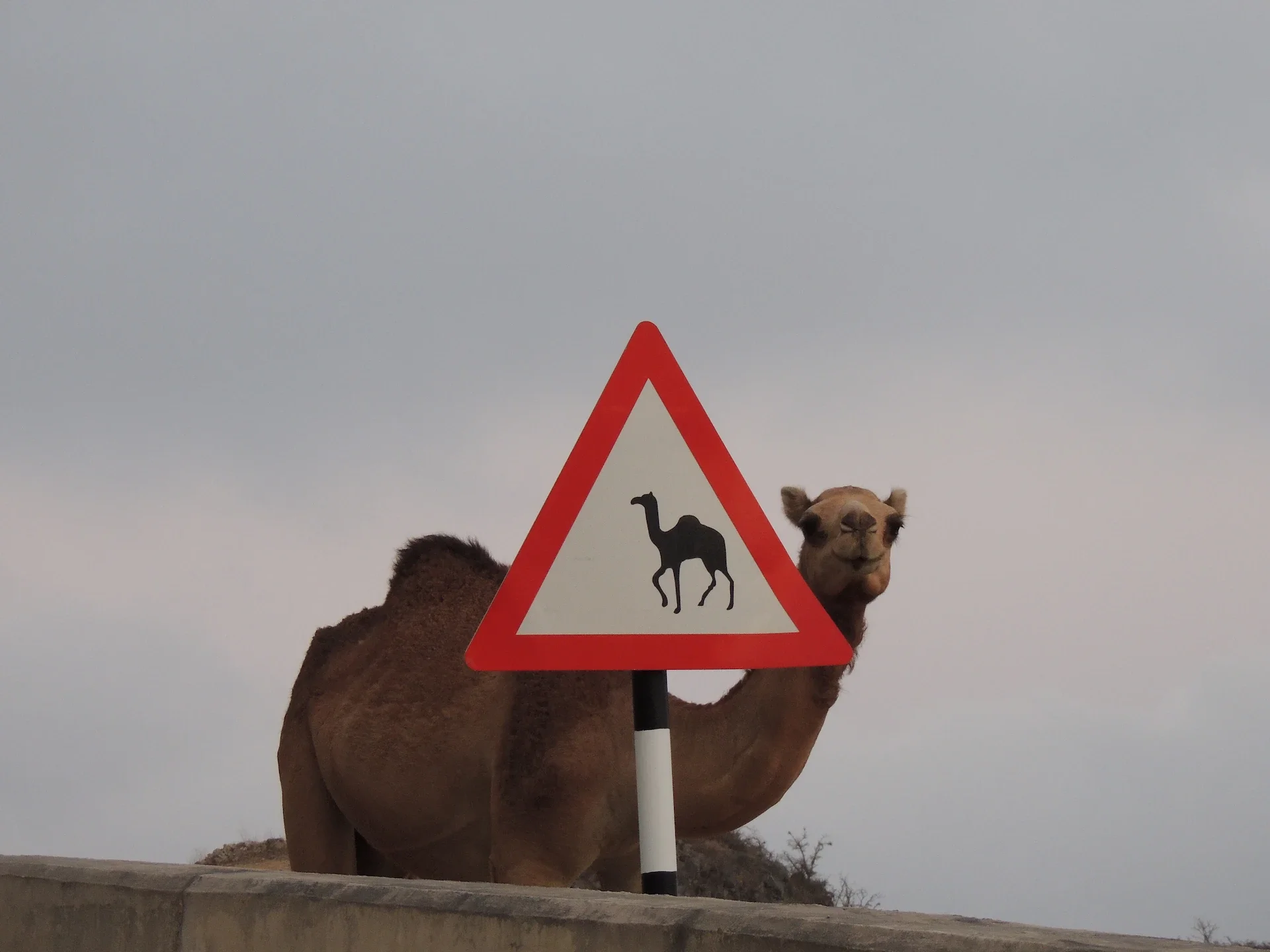Contemporary Pastoralism in the Dhofar Mountains of Oman
A camel next to a camel warning sign, Dhofar
In this paper, we examine the current state of camel, cattle and goat pastoralism in Dhofar. Pastoralism is a way of life that involves raising livestock.
Our study found that pastoralists in the Dhofar Mountains are committed to their way of life for deep sociocultural reasons, even though it's becoming more challenging. The cost of maintaining their animals is high, and social values are changing due to modernization.
One of the key findings is how pastoralists are dealing with these challenges. They are investing capital in buying feed for their livestock, which allows them to keep larger herds than the land would naturally support. However, this puts great pressure on the endemic cloud forest vegetation, leading to biodiversity loss. Moreover, these high costs make it difficult for pastoralists to invest in things like marketing and commercializing their livestock, meaning they aren't selling as many animals as they could.
Ultimately, we conclude that the primary motivation for these pastoralists isn't economic profit, but a strong commitment to the cultural values and traditions of their lifestyle, which are passed down within their families. This deep-seated cultural connection is what keeps them going despite the economic, environmental and social pressures they face.
Read more: https://doi.org/10.1007/s10745-020-00153-5

